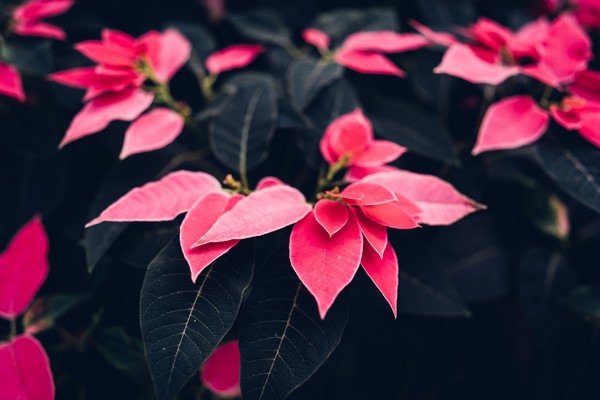Although consumers mainly associate Poinsettias with the festive season, growers are already embarking on the challenge to deliver a beautiful end product – and good crop scouting for pests is essential.
From the beginning of the crop, pests such as thrips, whitefly, sciarid fly and Duponchelia can cause problems. It is therefore advisable to monitor Poinsettias closely from the start. According to Biobest Bug-Scan Yellow sticky traps and pheromone traps can help.
Biobest advisor, Gert-Jan de Vast, also advises growers to pick up plants regularly for a visual inspection. "A pest like Bemisia, for example, is not always active - but it can certainly form a localized hotspot,” he says.

Programs for young plants
Poinsettias are potted in mid-summer. The plants then need plenty of water and face challenging conditions in terms of heat and drought. Root diseases, such as Pythium, can prove problematic. Gert-Jan recommends using the biofungicide Asperello T34 Biocontrol as it offers a preventative solution against harmful soil fungi.
“In addition, the young plants can also be attacked by sciarid and shore fly larvae. Feeding on the young roots, they can cause losses. We recommend growers include nematodes (Steinernema-System), soil predatory mites (Hypoaspis-System) or soil predatory beetles (Atheta-System) in their strategy.”
Whitefly and thrips
When the young plant material arrives in the nursery, growers should check for whitefly. After potting, the young plants are also susceptible to thrips, with the pest pressure depending on the cultivation method and, among other things, the previous cultivation.
“Thrips pupae that have remained or are hidden, for example in the ground covering, can easily lead to a new infestation,” says Gert-Jan. “It is therefore important to invest early in a good defensive program. Swirskii-System is effective against thrips and whitefly, while the parasitic wasps Eretmocerus-System and Encarsia-System both control whitefly.
Good mix
“These beneficials can be combined in a program with IPM compatible chemical sprays,” he explains. “However, as the crop develops, efficient spraying becomes more difficult. As the Poinsettias developed more foliage, it is difficult to get good spray coverage on every leaf - reducing overall effectiveness. It is therefore really important to make sure the biological program is in order."
 For more information:
For more information: